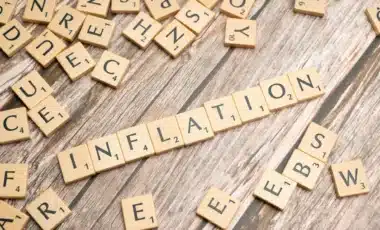The UK’s economy showed surprising growth in February, with a 0.5% increase in GDP, far surpassing the forecasted 0.1% rise, driven in part by stronger trade performance.
This unexpected growth follows a stagnant January, where no expansion was recorded, and represents a significant improvement in economic activity.
February’s results provide a glimmer of hope for the UK’s economic recovery, offering a more optimistic outlook after a period of uncertainty. However, despite the positive figures, several challenges loom on the horizon, including the potential impact of global trade tensions and rising domestic costs.
According to The Epoch Times, concerns regarding the U.S. tariff threat remain a major factor.
Growth Figures and Sector Performance
The latest data, released by the Office for National Statistics (ONS), highlights a significant rebound in various sectors. Manufacturing production grew by 1.5% in February, recovering from a 0.5% decline in January.
The services sector, the largest in the UK, also saw a 0.3% increase, while the construction industry grew by 0.4%. These improvements signal a recovery in economic activity across multiple industries.
The ONS also revised the January figures, initially reporting a 0.1% decline. January’s data has now been revised to show no growth, further reinforcing the positive momentum seen in February.
Political Context and Government Reactions
The figures come as a boost for Labour, especially for Chancellor Rachel Reeves, who has made economic growth a central priority. Reeves expressed optimism, stating that the growth figures were encouraging, but acknowledged the changing global landscape, particularly in relation to U.S. trade policies.
These growth figures are an encouraging sign, but we are not complacent – Reeves said.
However, she added,
The world has changed and we have witnessed that change in recent weeks.
“I know this is an anxious time for families who are worried about the cost of living and British businesses who are worried about what this change means for them – she continued.”
“This government will remain pragmatic and cool-headed as we seek to secure the best deal with the United States that is in our national interest.”
Challenges Ahead : The Impact of Trump’s Tariffs
Despite the positive news, the UK’s future economic outlook faces significant challenges. U.S. President Donald Trump recently imposed a blanket 10% tariff on UK goods, which is expected to hurt British exports. This move could dampen future growth, especially for industries reliant on trade with the United States.
The looming tariff threat casts a shadow over the positive figures. As Nicholas Hyett of Wealth Club remarked,
“GDP data often feels a bit dated by the time it’s published—the Trump-shaped asteroid that hit markets in the last week means February’s data feels practically pre-historic.”
Sector-Specific Concerns and Broader Economic Outlook
In addition to tariff concerns, the UK is facing rising corporate taxes, as well as increased utility and consumer bills, which came into effect in April. These factors are expected to put further pressure on the economy in the months ahead, making the path to sustained growth uncertain.
While the February data is promising, many experts warn that the growth figures could be overshadowed by the ongoing global economic disruptions. Conservative politicians have been quick to point out that there is still much work to be done.
Mel Stride, the shadow chancellor, criticized Labour’s economic approach, saying,
“Since coming to office, Labour’s choices have killed growth stone dead and there is still a long way to go to recover.”
Despite these political and economic headwinds, the UK’s February data marks a hopeful start to the year, even as uncertainties loom large over its long-term prospects.









